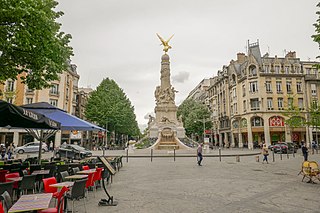
Reims is the most populous city in the French department of Marne, and the 12th most populous city in France. The city lies 129 km (80 mi) northeast of Paris on the Vesle river, a tributary of the Aisne.

Champagne is a sparkling wine originated and produced in the Champagne wine region of France under the rules of the appellation, that demand specific vineyard practices, sourcing of grapes exclusively from designated places within it, specific grape-pressing methods and secondary fermentation of the wine in the bottle to cause carbonation.
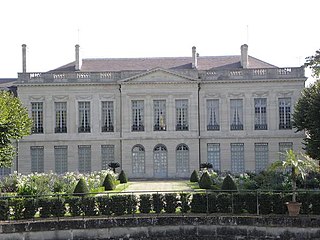
Marne is a département in the Grand Est region of France. It is named after the river Marne which flows through it. The prefecture (capital) of Marne is Châlons-en-Champagne. The subprefectures are Épernay, Reims, and Vitry-le-François. It had a population of 566,855 in 2019.

Taittinger is a French wine family who are famous producers of Champagne. The estate is currently headed by Vitalie Taittinger, who is the daughter of Pierre-Emmanuel Taittinger, a member of the consultative committee of the Banque de France. Its diversified holdings included Champagne Taittinger, Société du Louvre and Concorde Hotels, whose flagship is the famed Hotel de Crillon on the Place de la Concorde in Paris, France as well as the Loire Valley wine-producing firm of Bouvet-Ladubay, and a partnership in Domaine Carneros in California, until it was sold to Starwood Capital in 2005.

Louis Roederer is a producer of champagne based in Reims, France. Founded in 1776, the business was inherited and renamed by Louis Roederer in 1833. It remains as one of the few independent and family-run maisons de champagne. Over 3.5 million bottles of Louis Roederer champagne are shipped each year to more than 100 countries.
Heidsieck & Co "Monopole" is a champagne house located in the Champagne region of France.

Veuve Clicquot Ponsardin is a Champagne house founded in 1772 and based in Reims. It is one of the largest Champagne houses. Madame Clicquot is credited with major breakthroughs, creating the first known vintage champagne in 1810, and inventing the riddling table process to clarify champagne in 1816. In 1818, she invented the first known blended rosé champagne by blending still red and white wines, a process still used by the majority of champagne producers.
Krug Champagne is a Champagne house founded by Joseph Krug in 1843. It is based principally in Reims, the main city in France's Champagne region and is one of the famous Champagne houses that formed part of the Grandes marques. Today the house is majority owned by the multinational conglomerate LVMH Moët Hennessy – Louis Vuitton S.E. whose portfolio includes other well known wine brands such as Moët & Chandon, Veuve Clicquot, Château d'Yquem and Ruinart. Despite LVMH's majority ownership, the Krug family is still actively involved in all the key decisions of the house but does not manage the day-to-day operations.

Ruinart is the oldest established Champagne house, exclusively producing champagne since 1729. Founded by Nicolas Ruinart in the Champagne region in the city of Reims, the house is today owned by LVMH Moët Hennessy Louis Vuitton SA.

Champagne Pommery is a Champagne house located in Reims. The house was founded as Pommery & Greno in 1858 by Alexandre Louis Pommery and Narcisse Greno with the primary business being wool trading. Under the guidance of Alexandre's widow, Louise Pommery, the firm was dedicated to Champagne production and soon became one of the region's largest Champagne brands. Champagne Pommery was the first house to commercialize a brut Champagne in 1874.

Annelles is a commune in the Ardennes department in the Grand Est region of northern France.
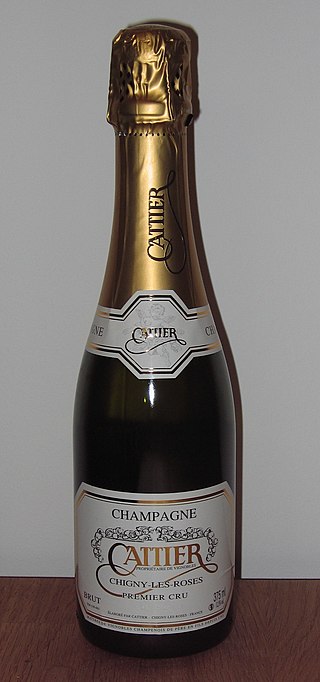
Cattier is a family-owned Champagne house located in Chigny-les-Roses, a Premier Cru village of the Montagne de Reims, part of Champagne, France. The Cattier family has owned vineyards since 1625, and has been running the House for over 13 generations.

Orbais-l'Abbaye is a commune in the Marne department in north-eastern France. The abbey at Orbais was founded at the end of the 7th century by Saint Réol, and the remains are situated in the centre of the town.

Duval-Leroy is a Champagne producer based in Vertus, a village in the Côte des Blancs region of Champagne. The house, founded in 1859, produces both vintage and non-vintage cuvées as well as a line of organic wines. The house of Duval-Leroy is also known for its pioneering role in promoting a sustainable development model for its viticulture.
Henriot is a Champagne producer based in the Reims region of Champagne. The house, founded in Reims 1808, produces both vintage and non-vintage cuvée. Henriot has been under family ownership since 1994 when Joseph Henriot left Veuve Clicquot to manage the estate. Henriot's cellar master Laurent Fresnet, who was named "Sparkling Winemaker of the Year" by International Wine Challenge in 2015 and 2016, has said: "What makes our champagne so special is that it is sourced from beautiful terroirs, mostly Grand & Premier Cru vineyards. Thanks to our independent status, I can dedicate the time and care they require to craft the most luminous champagnes and perpetuate the unique style of the House."

The history of Champagne began when the Romans planted vineyards in this region of northeast France in the 5th century, or possibly earlier. Over centuries, Champagne evolved from being a pale, pinkish still wine to a sparkling wine. When Hugh Capet was crowned King of France in 987 at the cathedral of Reims, he started a tradition that brought successive monarchs to the region—with the local wine being on prominent display at the coronation banquets. The early wine of the Champagne region was a pale, pinkish wine made from Pinot noir.
Bernard de Nonancourt was a French businessman, member of the French Resistance and president of the Laurent-Perrier champagne house for more than fifty years. Under de Nonancourt' s leadership, Laurent-Perrier expanded to become the world's third largest seller of champagne by 2005. He was known as "Le Grand Bernard" within the industry.
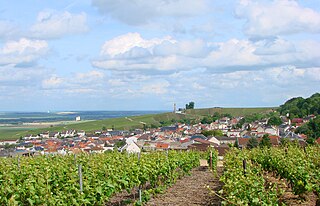
Montagne de Reims Regional Natural Park is a protected area in the Grand Est region of France. It is organized around the Montagne de Reims, a wooded range of hills covered by vineyards that produce the region's eponymous sparkling wine, Champagne.
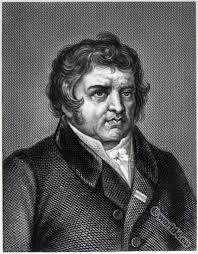
William-Louis Ternaux (1763-1833), the eldest son of Charles-Louis Ternaux (1738-1814), took over the direction of his family’s small woolen cloth business at Sedan in 1781 and rose to become the leading woolens manufacturer in France under Napoleon and during the Restoration. At the height of his success and fame in 1823, he challenged anyone to provide evidence to the contrary. If anyone, he wrote, could prove “... the existence of a manufacturer, not only in France, but in Europe, who has, at the same time, manufactured a greater amount and a greater value of woolen stuffs, created more new stuffs, experimented more with the use of raw materials and with the texture of fabrics, added more to the value of common woolen cloths, than I have done in the course of my life, I stand ready to pay this researcher the sum of 100,000 francs for his efforts.”
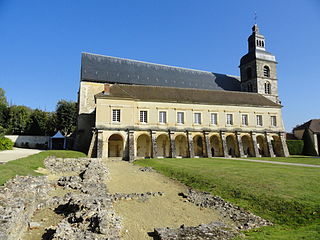
Hautvillers Abbey, or more formally the Abbey of St Peter, Hautvillers, is a former Benedictine monastery in the Hautvillers commune of the Marne department in north-eastern France. The abbey remained active between 665 and the French Revolution of 1789. It housed the relics of Saint Helena, Empress and mother of Constantine, between 841 and 1819. One of its monks, Dom Pérignon, contributed to the development of sparkling wine in the Champagne region. The building has been classified as a monument of historical value since 1983.
















